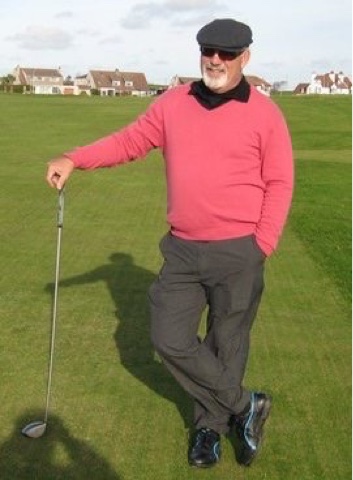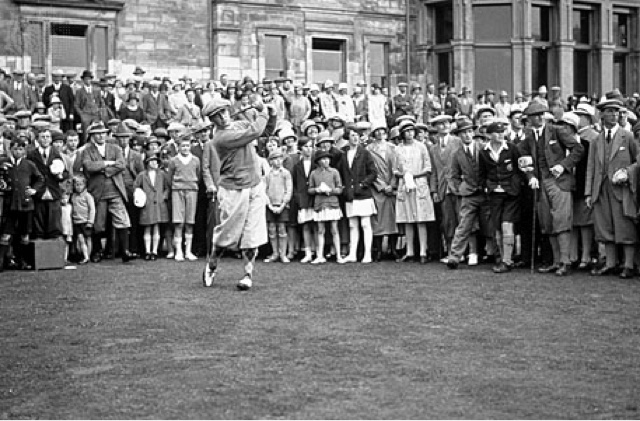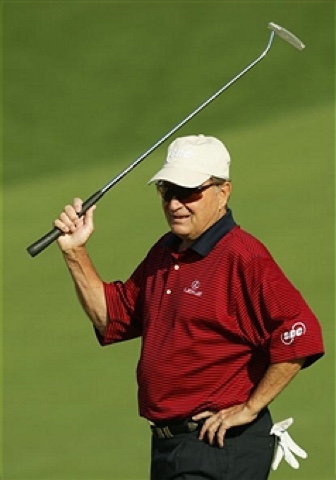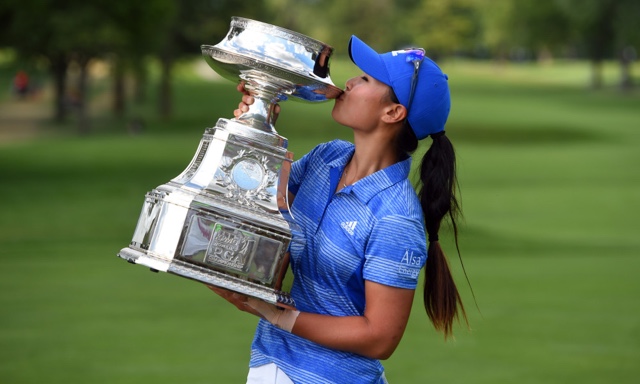Well, not many people should be teachers in this life. And clearly, I'm not one of them. Yesterday, I played a match with Radar as a partner against Peter Cole and Paul Gentile. Radar and I ham and egged it pretty well, ending up three up with four to play. I played well early until my back started giving me grief, and I rode Radar the rest of the way.
We lost fifteen to a nice birdie by Peter. And it was then that things really started to unravel for us. On sixteen Paul pushed his drive to the right into the fescue and had to take an unplayable. Peter hit his second into the fescue on the left and never found the ball. Radar and I were, or should have been, quids in. It was then that I failed miserably in terms of practising what I'd just been preaching about playing conservatively.
I had hit a fairly good drive and had just seen Peter hit his second shot in the weeds on the left. Given that Paul had also taken an unplayable, a par on sixteen would have likely been good enough to leave us dormie, if not give us the win. I was sitting on a bit of an upslope. The wind was coming fairly strong off the bay which would push my ball left. Off an upslope, the usual miss is left as well. So, having seen where Peter ended up, playing from about ten yards behind me, you would have thought that common sense would prevail.
I could have taken a six iron and knocked it safely down to within 120 yards of the green. But I took my usual club, a 22 degree fairway wood, that would have got me inside 100 yards. It would have got me inside 100 yards had I not pull hooked it off the uphill lie. The ball would have followed Peter's ball into the thick cabbage had it not hit a tree.
I was now lying two about 150 yards from the pin in jail behind a couple of trees. Paul had hit his fourth shot just short of the green and was likely to make a six. All I had to do was pitch the ball out and knock my fourth on the green and we were almost certainly going to be dormie. Instead, after consulting with Radar, I decided to try the perfect shot; a low hook through a small gap in the trees. I hit the ball almost perfectly, but it hit the tree and almost hit me as it bounced back.
I now had another option. I could now just chip it out and then knock my fifth shot on the green and have a putt for bogey. But, in for a penny, in for a pound, I tried another miracle shot. The ball didn't hook out of the rough and I hit across the fairway and behind another tree. And so it went. When Radar hit his fourth shot over the green and then duffed his pitch, Paul was able to win the hole with a bogey six.
If I had just pitched out with my third shot I'd have almost certainly made six for a half. But, as the saying goes, if my aunt had had nuts she'd have been my uncle. That's what often happens when you try to be too clever by half and attempt to play the miracle shot. You often end up looking like a mug. The biys won eighteen to halve the match. Radar and I had managed to blow a three up lead with four to play. And, the way we played coming in, we were lucky there wasn't five holes to play, because we'd have likely lost the next hole as well.
Hitting dumb shots really makes you feel stupid. It saps your energy, because you realize that it all could have been avoided had you simply exercised some common sense, taken your medicine, and got the ball back in play. Unfortunately, in my game, common sense isn't always that common. So, this story comes as a sort of confession, after my having talked about how smart I was the day before. I guess I'm not so clever after all.
























